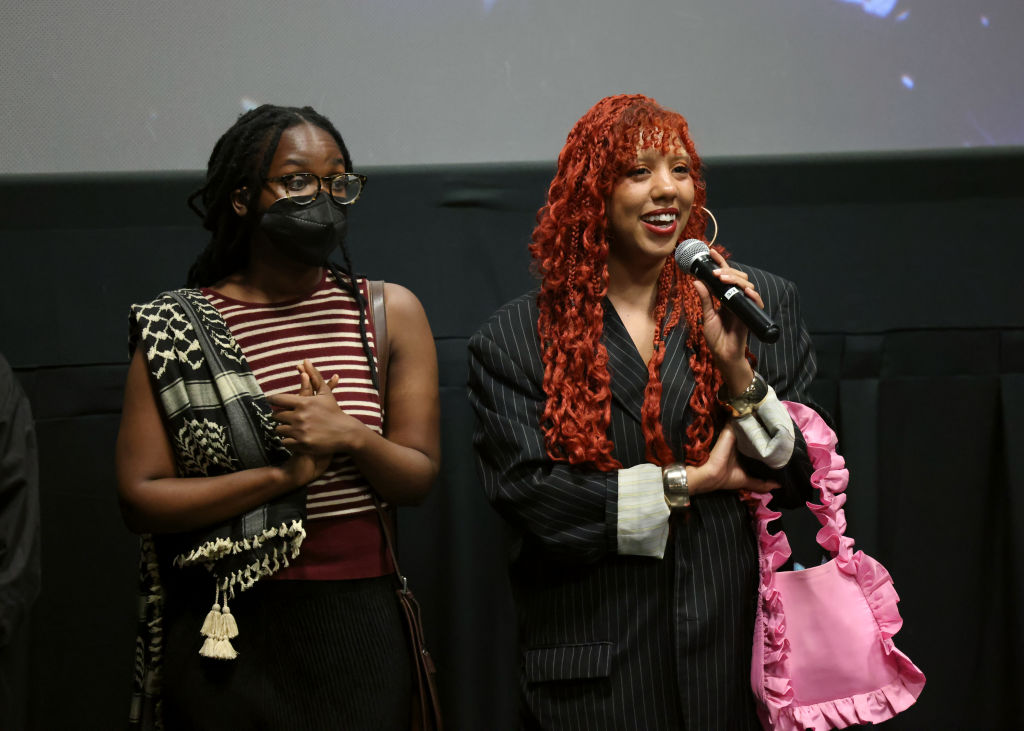In the new investigative documentary Seeking Mavis Beacon, director Jazmin Jones and producer Olivia McKayla Ross offer a unique exploration of technology, representation and digital identity for Black millennials.
For many, their first introduction to the keyboard was through Mavis Beacon Teaches Typing, the computer software featuring a beautiful, seemingly successful Black woman as the face and guide to correctly using the QWERTY typing system. As technology progressed, Mavis’ affirming voice and boxy blazer became a distant memory, replaced by Siri’s robotic voice and Alexa’s heartless engagement.
“This character has had a big impact on our culture,” Jones told Blavity’s Shadow and Act in a recent interview.

Jones pointed out that Mavis Beacon was one of the first educational-based software programs that was anthropomorphized, meaning it had human characteristics or behaviors associated with it. She emphasized its success by revealing the most up-to-date sales numbers: Over 10 million copies of the typing software have been sold worldwide.
Jones referred to her producer’s revelation of Mavis being the “Henrietta Lacks of technology” and serving as the prototype for “servile femme bots” such as Siri, Cortana and Alexa.
“If we are going to humanize our technology, let’s do it through the image of a woman, and the specific image of a Black woman,” Jones said.
She later added. “We absolutely have to unpack the intersectional identity politics of it all.”
Though Mavis Beacon was not an actual person, the face of the software was. Her name was Renee L’Esperance, and she was a Haitian model who was discovered while working at Saks Fifth Avenue in Los Angeles.
According to the documentary, she retired to the Caribbean after her image was used to revolutionize educational software. And like many stories of Black images or faces used throughout history, L’Esperance’s compensation did not equal her impact. She was only paid $500 for her work and didn’t get to share any royalties from the game’s success.
“When Renee agreed to model for the software, they hadn’t named it. So even when she consented to do this modeling, she didn’t know she would be named Beacon,” said Ross.
While the topic of fair compensation was one issue, the documentary also highlighted how L’Esperance being referred to as Mavis Beacon is an accurate representation of the mindless erasure of Black people in the creative and creator roles in technology.
“I’m sure the developers didn’t know that her last name, “L’Esperance,” means hope,” the producer said.
With FBI-worthy detective work, Ross and Jones give life and voice to Mavis Beacon. The two even set up a hotline for people to call in with tips, giving the feeling that a real Mavis Beacon may appear at the end of this documentary.
Unsurprisingly, viewers learn that the character Mavis Beacon was the creation of three white men: Les Crane, Walt Bilofsky and Mike Duffy.
Their company, The Software Toolworks, Inc., launched Mavis Beacon Teaches Typing in 1987.
As viewers watch Jones and Ross unfold a forgotten mystery, the two do a great job not to villanize the developers but to expose the truth of representation in technology and the digital space for Black people.
“I’m watching both Olivia and I also be looked to as authorities, and people are asking us, ‘What’s the future of tech? What’s the future of AI? And it’s like, whoa!'” said Jones.
She added, “This film is very polemic. But also, I don’t think I realized until a few days ago — in addition to this being a coming-of-age movie and an investigation, this is an advocacy film, and we are advocating for the future of tech that we want, and that’s a satisfying byproduct.”
Seeking Mavis Beacon is in select theaters now with expansion soon.